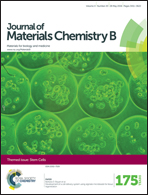The effect of hypoxia and laminin-rich substrates on the proliferative behavior of human neural stem cells
Abstract
Human neural stem cells (hNSCs) possess an enormous potential to be utilized in novel cell-replacement therapies for neurodegenerative diseases and injuries. The hNSCs are a renewable source of cells with the capacity to generate the major cell types of the central nervous system (CNS). However, the translational potential of cell-based therapy is constrained due to the limited availability of scalable methods to rapidly expand numbers of stem cells in vitro. Here, we investigated the possible synergistic effect of oxygen concentration and substrate composition on hNSC growth. The hNSCs were cultured on six different substrates (i.e., collagen I, collagen IV, poly-L-ornithine, fibronectin, laminin, and Matrigel) under normoxic (21% oxygen concentration) and hypoxic (3% oxygen concentration) conditions and then total cell numbers were determined after 2 and 4 d. The percentages of cells undergoing proliferation (EdU+) and apoptosis (TUNEL+) varied with culture conditions, with a synergistic interaction between Matrigel substrate and hypoxia that resulted in the greatest number of hNSCs after 4 d compared to other conditions. These findings inform new methods to scale up NSC production by identifying potential substrate biomaterial design criteria as well as culture conditions that favor the generation of larger numbers of undifferentiated cells.

- This article is part of the themed collection: Stem Cells

 Please wait while we load your content...
Please wait while we load your content...